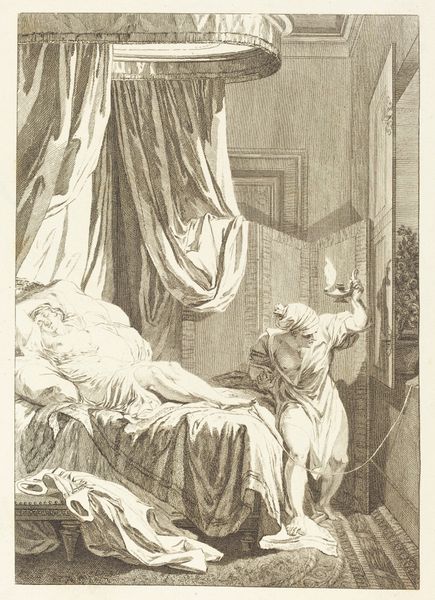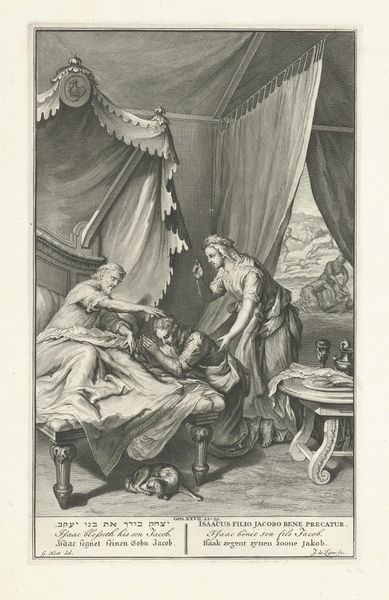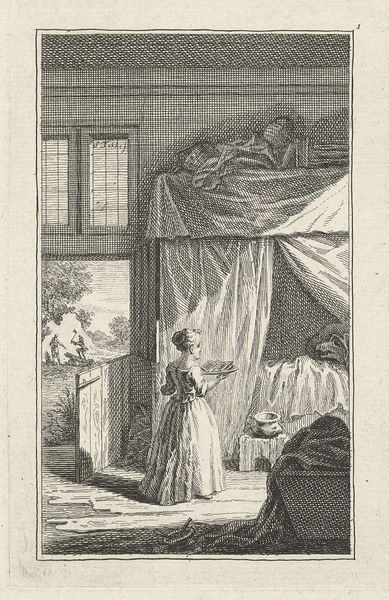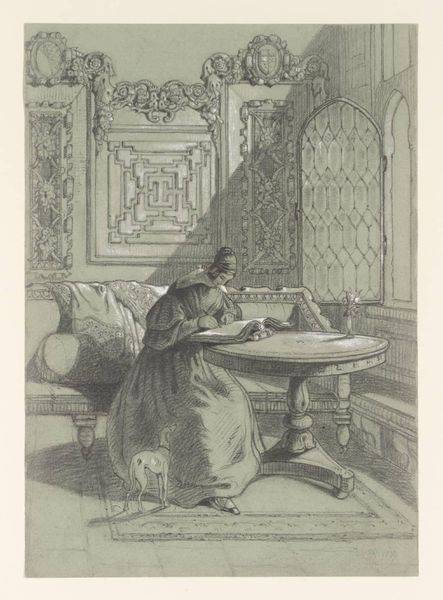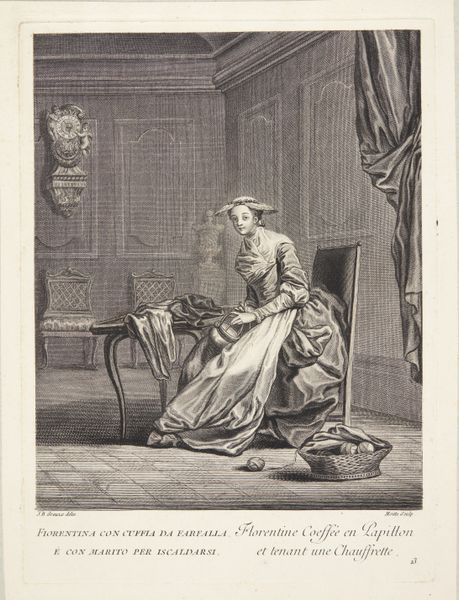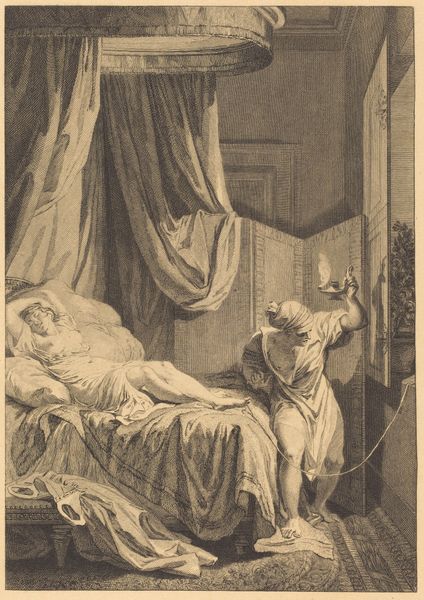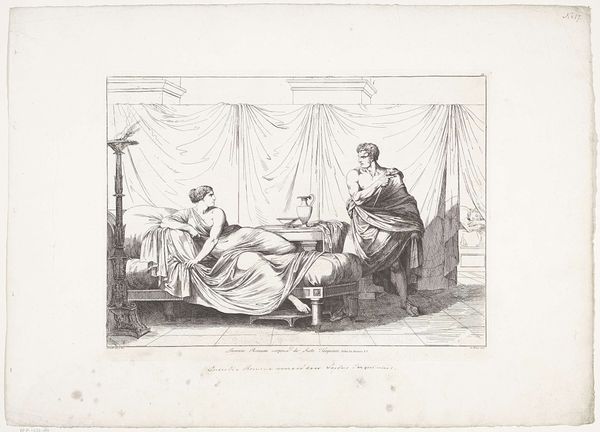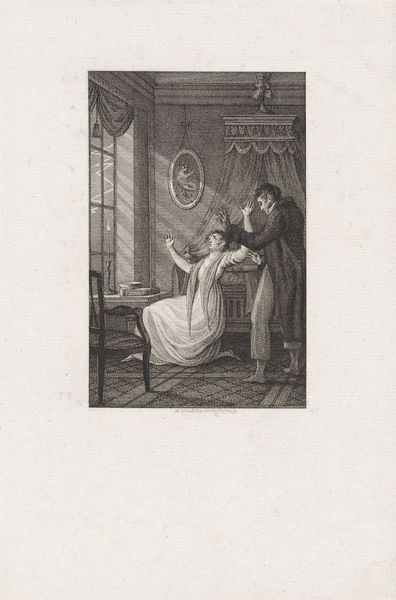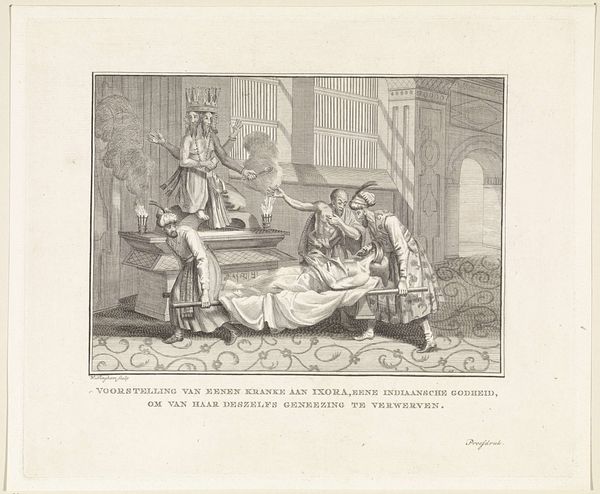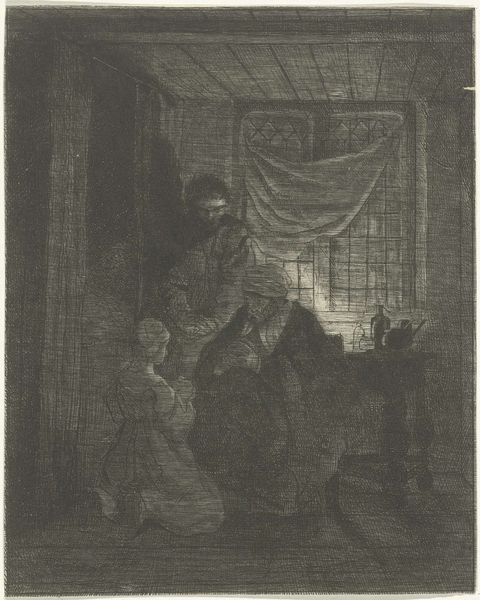
drawing, print, intaglio, paper, ink, pencil
portrait
drawing
medieval
narrative-art
intaglio
pencil sketch
old engraving style
figuration
paper
form
vanitas
ink
intimism
pencil
chiaroscuro
19th century
line
pencil work
genre-painting
history-painting
academic-art
miniature
realism
Dimensions: height 119 mm, width 158 mm
Copyright: Rijks Museum: Open Domain
Curator: I'm immediately drawn to the somber atmosphere. The contrast between the light on the artist's face and the deep shadows really emphasizes a sense of introspection. Editor: Indeed, and that atmosphere is heightened when considering this print "Schilder in zijn atelier," or "Painter in his studio," is attributed to Arie Kunz, dating sometime between 1835 and 1925. It’s an intaglio print, a type of etching where the image is incised into a plate. Curator: The hatching and cross-hatching create a beautiful tonal range. Look at the details in the bed hangings, contrasted by the smoothness of the skull resting on the table. There’s a definite skill in rendering these textures with such simplicity. Editor: Knowing that Kunz worked during a time when art academies emphasized historical and genre painting helps to understand the narrative he is perhaps subtly conveying. This melancholic scene touches on the theme of vanitas; notice the skull beside the artist hard at work! Curator: Yes, there's a dialogue between artistic creation and mortality. Is it possible that the artist depicts himself working, knowing death lurks around him? The work being created cannot save him? Editor: Precisely. Prints like this were often circulated widely, influencing popular perception of artists, presenting them as thoughtful intellectuals facing existential questions and in conversation with a long artistic legacy. We should remember such prints offered entry into private spheres as a commodity for bourgeois collectors. Curator: Thinking about the line work further, it really guides your eye across the image from the easel on the left to the skull on the right, completing the composition's thematic circle. The medium really conveys this feeling that these things are connected to each other and the central figure who quietly mediates the world. Editor: This work highlights a common 19th-century theme, this focus on artists in their studios emphasizes both the craftsmanship and philosophical contemplation associated with artistic practice. It's interesting to ponder who purchased these prints and the message they were meant to consume and convey in their own environments. Curator: A potent reminder that art exists not in a vacuum, and of the formal power found in that combination. Editor: An evocative combination, to say the least, when considered from all angles.
Comments
No comments
Be the first to comment and join the conversation on the ultimate creative platform.
